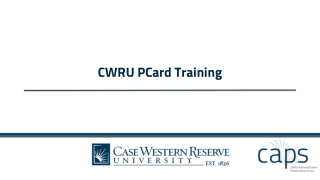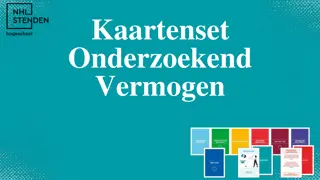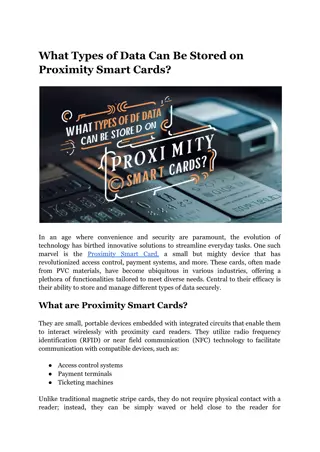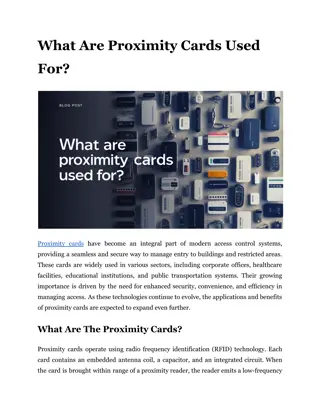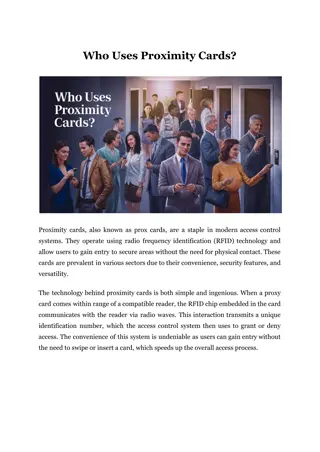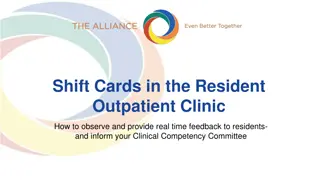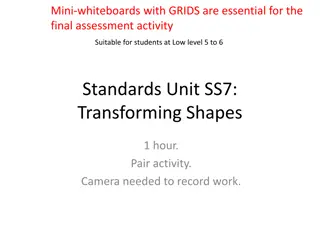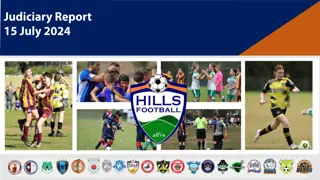Creative Methods Evaluation Cards & Tips for Using Creative Methods
Explore creative methods like body mapping and photo interviews for in-depth qualitative insights. Engage participants, capture diverse opinions, and foster unexpected outcomes. Tailor questions, plan effectively, and ensure consent for dissemination. Enhance your evaluation process with valuable tips for utilizing creative methods appropriately.
Download Presentation

Please find below an Image/Link to download the presentation.
The content on the website is provided AS IS for your information and personal use only. It may not be sold, licensed, or shared on other websites without obtaining consent from the author.If you encounter any issues during the download, it is possible that the publisher has removed the file from their server.
You are allowed to download the files provided on this website for personal or commercial use, subject to the condition that they are used lawfully. All files are the property of their respective owners.
The content on the website is provided AS IS for your information and personal use only. It may not be sold, licensed, or shared on other websites without obtaining consent from the author.
E N D
Presentation Transcript
Tips for using creative methods Be clear on why you are doing it, the questions you are seeking to answer and what value it brings to your work and to your users experience. Creative doesn't necessarily mean quicker. Be realistic about how long it takes. Choose methods that are appropriate for your audience. Involve users throughout the evaluation process. Make sure you are aware of who you could be excluding. Consider how your creative methods improve or compromise equity. Keep checking what works and be open to adapting your methods. Be clear on how you intend to use the data you collect and ensure you have informed consent. Don't just think about creative ways to collect data, think about creative methods for sharing your data. Read more about creative methods here 2
Body map Description: A discussion to help people explore their self identity. Participants are given a body map and asked questions e.g. What are you most worried about? What are you most hopeful about? . Participants then draw and write their answers on or around their body outline. Preparation needed: Preparation of key questions, session times, analysis time and dissemination. Simplicity level: Easy. Type of evidence: In-depth qualitative insights. What do you need for this: Paper copies or an online whiteboard (Miro, Jamboard, Google Docs, Mural etc) with a drawing of a body. Post-it notes or space for taking notes. Benefits: Useful for people with limited literacy, captures lots of opinions, you can see change over time, it can reveal unexpected outcomes. How to do it: Step-by-step process and template body map here. Considerations: Make sure you are clear on dissemination and have consent to do so. Top tips for facilitating: Tailor the language to the individual s ability and preferences. Make sure some of your questions help to measure your outcomes. When to use: This method explores change over time, so use it at the start and the end of engagement. Regular intervals may be more appropriate for longer- term engagement. 4 Some content adapted from ESS
Photo interviews Description: The use of photographs to stimulate discussion. The evaluator presents photographs (or participants are asked to take photographs) and the participant discusses the meaning behind the photos and how the photographs reflect their experiences of the project or their life. Preparation needed: Planning time, plus discussion, interpretation and analysis time. If participants are supplying the photos, they will need to be briefed and have time to take the photos. Simplicity level: Easy. Type of evidence: In-depth qualitative insights. Benefits: Challenges participants, reduces researcher misinterpretation, can produce unexpected information, promotes more detailed interviews. What do you need for this: Photos (printed or shared online), a camera, note taking methods or recording equipment. Considerations: The interviewer s presence may bias the answers given. Top tips for facilitating: The key questions are, In this photograph, what do you think represents what we have been doing in this project? , How does it make you think about the project differently? , How does it represent what you or others have achieved in this project? . Example here. When to use: Typically completed during projects (evaluating the implementation) or at the end of a project (evaluating the impact). 5 Some content adapted from Photo elicitation (nsw.gov.au)
Graffiti wall Description: A graffiti wall is a quick way to collect qualitative feedback related to your outcomes. Hang up a large piece of paper or share an online whiteboard with key questions and allow users to share their thoughts. Then identify themes within the data. Preparation needed: Planning key questions / set up, theming and analysis time. Simplicity level: Easy. Type of evidence: Ad-hoc qualitative insights. What do you need for this: Large poster and pens or an online whiteboard (Miro, Jamboard, Mural etc). Benefits: Collect information quickly, users can see the evaluation data live, users can support with analysis. Top tips for facilitating: Make sure you have clear questions. You could add blank comment cards or some prompts. This is a great visual way to capture data for reports and social media. Considerations: Unable to know the reasons behind a comment, needs to be stored securely, may want to record the session. Variation: Use a Facebook wall. Write a set of posts with your questions in them and leave space for comments. When to use: Regular intervals or in line with your planning meetings. 6 Some content adapted from Woodcraft Folk
Talk like a pirate Description: A quick and easy way to share feedback via a game. Ask participants to share their reaction to something by talking like a pirate: Ohhhh (I really like it), aarghh (I don t like it) or ohhhharghhh (it s a mix). Preparation needed: Planning time to pick the areas you want feedback on, session time to run the exercise and to take notes, review time and time to implement changes. Simplicity level: Easy. Type of evidence: Adhoc qualitative insights. What do you need for this: A Zoom meeting or a face- to-face session. Someone to note down the feedback. Benefits: Quick and easy feedback, interactive for participants. Top tips for facilitating: Encourage participation by participating yourself. You could do another game beforehand to get the group engaged. Considerations: Without further discussion, you will lack insights into why people feel that way. Some individuals may not feel comfortable explaining why in a group setting. When to use: Regular intervals in line with your planning meetings. 7 Some content adapted from Woodcraft Folk
Picture voting Description: Individuals vote on a range of visual choices around a particular question or issue by attaching stickers to their chosen answer. This could be done in person or done remotely using whiteboard software. Preparation needed: Set up and planning time, voting sessions, review time, prioritisation and planning of changes, and feedback time. Simplicity level: Easy. Type of evidence: Ad-hoc qualitative insights. What do you need for this: Photos (printed or shared online) and voting stickers. Benefits: Provides quick insights into preferences, can help you to make changes easily. Top tips for facilitating: Make sure to choose topics / issues that can be expressed using pictures. Use images that are clearly recognisable. Remind individuals that there isn t a right or wrong answer, you are interested in their preferences. Considerations: Decide whether to do this 1-on-1 or in a group setting. When to use: Regular intervals or in line with your planning meetings. Example: Discussing ideas for a new lunch club. 8 Some content adapted from Sheffield Kids
Timelines Description: Explore an individual s feelings over time. Draw a line in the middle of a page, mark the activities within the programme or times of day and ask participants to draw a line of how the felt about the activity. Positive above the line and negative below the line. Then ask them to talk through the reasons behind the highs and lows. Preparation needed: Time to set up timeline and think about prompt questions, coordinating session dates. Simplicity level: Easy. Scale of evidence: In-depth qualitative insights. What do you need for this: Paper and pens or an online whiteboard (Miro, Jamboard, Mural). Benefits: Explore what people think across different points during their engagement. Top tips for facilitating: The timeline is likely to be wavy, as users may have enjoyed some activities more than others. Encourage the individuals to share feedback and key points. If you have feedback from the individual in other formats, it could be useful to share those as prompts. Considerations: Hard to aggregate the data. When to use: It explores change over time, so use the method at the start and the end of engagement. Regular intervals may be more appropriate for longer-term engagement. 9 Some content adapted from NCVO
Evaluation wheel Description: The evaluation wheel or outcome wheel is a simple way to collect information about your outcomes. Divide a circle into segments and input your outcomes (one per segment). Discuss where the individual sees themselves for each outcome on a scale of 1-10. Preparation needed: Preparation time to create, 15-30 minute session time, analysis time. Simplicity level: Easy. Scale of evidence: In-depth qualitative insights. What do you need for this: A printed outcome wheel and pens, or an online version of the wheel on whiteboard software. Find out more and see an example here. Benefits: Results can be easily aggregated, show change over time, and are simple to analyse as the results are on a scale of 1-10. Top tips for facilitating: For each of the outcomes, make sure you discuss discuss what a 1 would look like and what a 10 would look like. Considerations: Data protection; think about how to share the aggregated data with users. When to use: At the start and end of engagement, to measure progress. Regular intervals may be more appropriate for longer-term engagement. 10 Some content adapted from ESS
Vox pops Description: Vox pops are short and snappy videos of people sharing their opinions and / or telling their story. This can be done among the participants. Discuss key questions to be asked, and allow participants to use their phones or to record an online video chat. Preparation needed: Planning and equipment set up, recording times, editing / analysis time and dissemination time. Simplicity level: Medium. Type of evidence: Qualitative insights. What do you need for this: Key questions, a safe space to record (in person or in a virtual meeting), consent forms, a clear process for data collection and the use of the videos, phones / cameras or online video software. Benefits: Individuals can express themselves in engaging ways. Considerations: If sharing, think about consent and safeguarding (animations with a voice over or video without individuals may be more appropriate.) It may not produce in-depth feedback. Think about how it will be shared. Top tips for facilitating this: Make sure you are clear on the purpose. Have key questions to ask but do not lead the answers. Variation: Creating a Big Brother Diary Room. How often should I do: Regular intervals or in line with your planning meetings. 12 Some content adapted from mypeer.org
Social media Description: Social media (Facebook, YouTube, Instagram, and Twitter) is a great way for disseminating information but it can also be used to collect feedback. You can use analytics to get evidence of your reach and use commentary to explore the difference you have made. Preparation needed: Time needed to explore analytics, hashtags and tagged content, time to input data, and time to review and then use the data. Simplicity level: Medium . Type of evidence: Ad-hoc qualitative insights. What do you need for this: Online monitoring and reporting software (such as Wakelet) or a simple spreadsheet (example here). Benefits: It can uncover unexpected outcomes and new areas of need, good to supplement other evidence, screenshots can make useful content for reporting and marketing. Top tips for facilitating: There is a lot of data on social media. Be clear about what you are interested in but also look at unexpected feedback too. Considerations: This method may generate a large amount of unstructured data that you need to review. When to use: After events or key engagements points. 13 Some content adapted from NCVO and ESS
Online discussions Description: Convening participants on a digital platform where they respond to discussion questions and other materials. Participants can interact and share responses in creative ways, such as by sharing pictures or videos. How often should I do: Key moments in line with your planning cycles. Simplicity level: Medium. Type of evidence: Ad-hoc qualitative insights. Preparation needed: Time to explore the content and plan carefully how to capture and analyse data based on specific indicators. Benefits: Can uncover unexpected outcomes and new areas of need. Online presence can increase accessibility as it allows participants to contribute from home, at a variety of times, with greater anonymity. What do you need for this: Online monitoring and reporting software (such as Wakelet) or a simple spreadsheet (example here). Considerations: May generate a large amount of unstructured data, and excludes those without digital skills. Top tips for facilitating: Build trust to allow people to share insights. Make sure instructions are clear and your discussions are easy to understand. 14 Some content adapted from NPC and ESS
Mobile ethnography Description: Mobile phones can be used to ask the participant to document their own lives by taking photos or recording video diaries during a fixed time period. Such methods can be used to empower communities to collect and share data. Preparation needed: Planning time and training on how to use the system needed. Time for collection, analysis and reviews. Simplicity level: Medium. Type of evidence: In-depth qualitative insights. What do you need for this: Data collection hardware / software. Benefits: Collect rich insights from a range of participants simultaneously. Mobile ethnography can reveal attitudes and behaviour that participants might not share in a more traditional, in-person observation. Top tips for facilitating: Test the software on multiple device types so you know how it differs. Make sure the language used is accessible. Considerations: Only gives a selective, partial perspective and challenging to conduct at scale. When to use: As part of a needs analysis or programme evaluation. 15 Some content adapted from NCVO and NPC
Mobile surveys Description: Mobile phones can be used to answer short surveys or qualitative prompt questions via text. This can be useful for capturing in the moment responses from participants. Tools available include Magpi and Kobocollect. Preparation needed: Planning time and training on how to use the system needed. Time for collection, analysis and reviews. Simplicity level: Medium. Type of evidence: Ad-hoc qualitative insights. What do you need for this: Data collection software and further advice is available here. You can also provide links to surveys using platforms such as SmartSurvey. Benefits: Quick and easy data collection and aggregation. You can get real-time feedback and can make data visualisation easier. Top tips for facilitating: Test the software on multiple device types so you know how it differs. Make sure the language used is accessible. Considerations: Make sure any software is usable and doesn t exclude anyone. Think carefully about how the platform integrates with your existing systems and any costs. When to use: Regular intervals in line with your programme milestones. 16 Some content adapted from NCVO and NPC
Short polls Description: Short polls can be used to assess people s opinions in real-time. This could be an online poll where people select their preferred option, a live poll or show of hands, or a suggestion session. Alternatively, you could send out pre-stamped envelopes or postcards. Preparation needed: Planning and dissemination time needed. Time for participants to respond, analysis time and time to share findings also required. Simplicity level: Easy. Type of evidence: Ad-hoc qual or quant insights. What do you need for this: Polling software (either live poll like Mentimeter or a survey like SmartSurvey). A suggestion box, pens and paper or pre-paid envelopes and postcards. Benefits: A useful way to gather data quickly and cheaply. Can use anonymity to gather opinions on more sensitive topics. Considerations: A sample bias is likely. To avoid annoying users make sure the results matter to users. May be unable to understand the reasons behind comments. Top tips for facilitating: For remote polls make sure the question is clear and the poll is shared at the right point with individuals. Make sure you have a process for feeding back on suggestions. When to use: Regular intervals in line with your planning meetings. 17 Some content adapted from NCVO
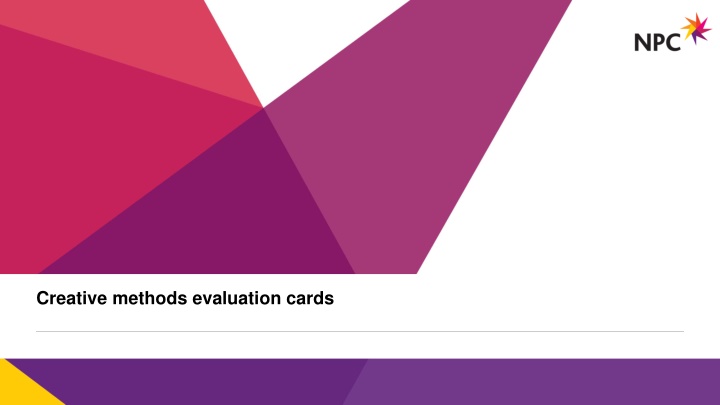

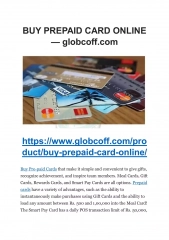
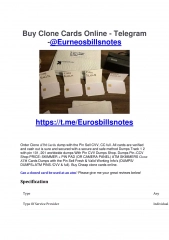
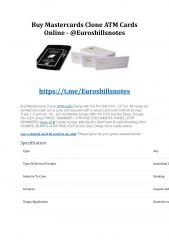
![Guardians of Collection Enhancing Your Trading Card Experience with the Explorer Sleeve Bundle [4-pack]](/thumb/3698/guardians-of-collection-enhancing-your-trading-card-experience-with-the-explorer-sleeve-bundle-4-pack.jpg)
